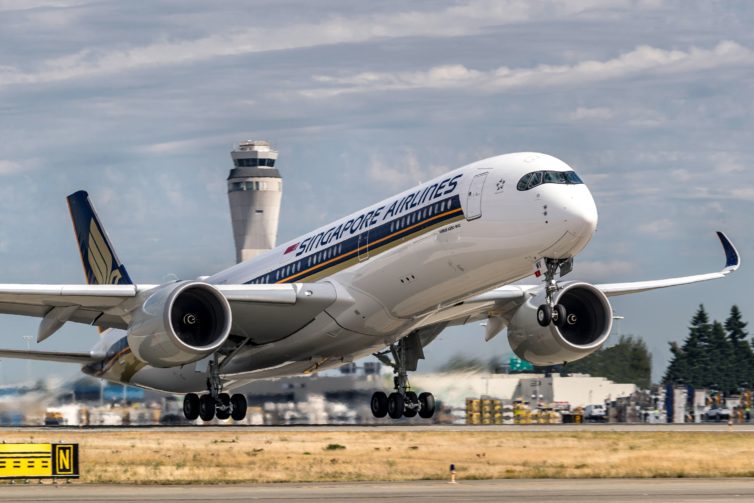
Singapore Airlines Airbus A350-900 takes off from SEA – Photo: Singapore Airlines
The contest has ended and a big congrats to Alex Nieves for winning! He will be giving this model a wonderful new home. Be sure to subscribe to our story email (we shoot you an email when we publish a new story) to make sure you don’t miss the next contest!
I get excited every time a new airline flies out of my hometown airport and I am guessing that you can relate. Especially when it involves an aircraft that is rare for the airport, and it also becomes the longest flight out of the airport. This was the case recently when Singapore Airlines (SQ) started service from Seattle-Tacoma International Airport (SEA) to Singapore Changi Airport (SIN) using an Airbus A350-900.
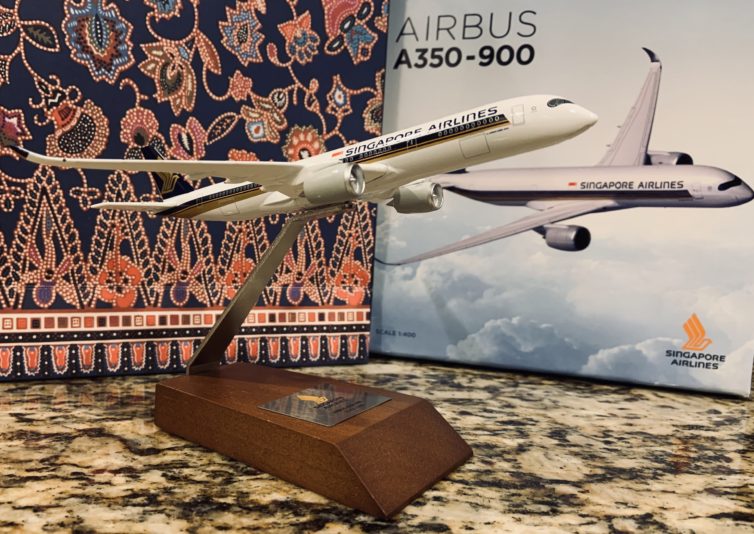
Here is the sweet 1:400 scale Singapore Airlines Airbus A350-900 model you can win!
And I know you are already wondering “How do I win that Singapore Airlines Airbus A350-900 model? I bet he is going to make me read his story and look at photos before telling me the deal.” #nailedit Keep on reading…
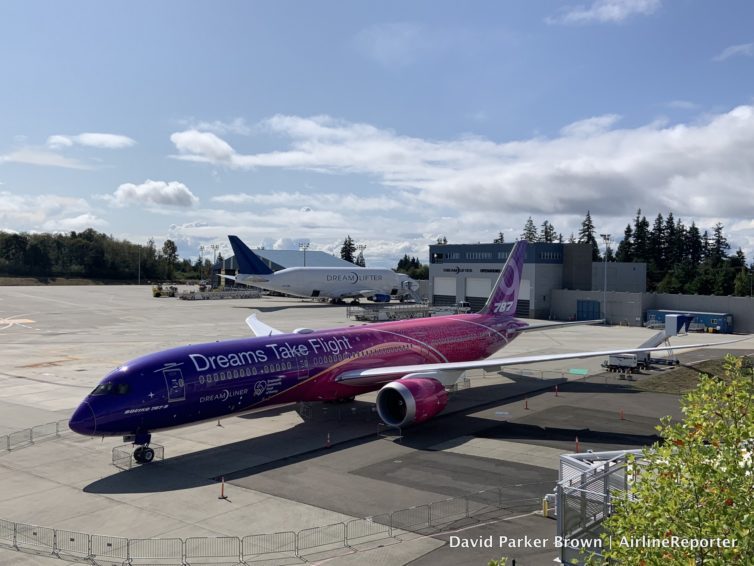
The 787-9 Dreamliner parked next to the Boeing Future of Flight and a sweet Dreamlifter!
A while back, I started to see photos of a purple and pink 787 and wondered what the heck it was all about. Then I saw that people had the chance to get up close and personal with the plane at the Boeing Future of Flight, and I realized that I needed to figure out the full story. It turns out that the special livery is inspired by the Employees Community Fund (ECF) of Boeing. And what is ECF, you might ask? Good question. According to Boeing:
“Since 1948, ECF has funded approximately $1 billion to local communities across the United States. The ECF has 20 chapters across Boeing, giving employees an opportunity to make a difference where they live and work. Each chapter is managed by local employees who make grants based on the needs of their communities. The special livery celebrates the commitment and generosity of our employees in their local communities.”
-
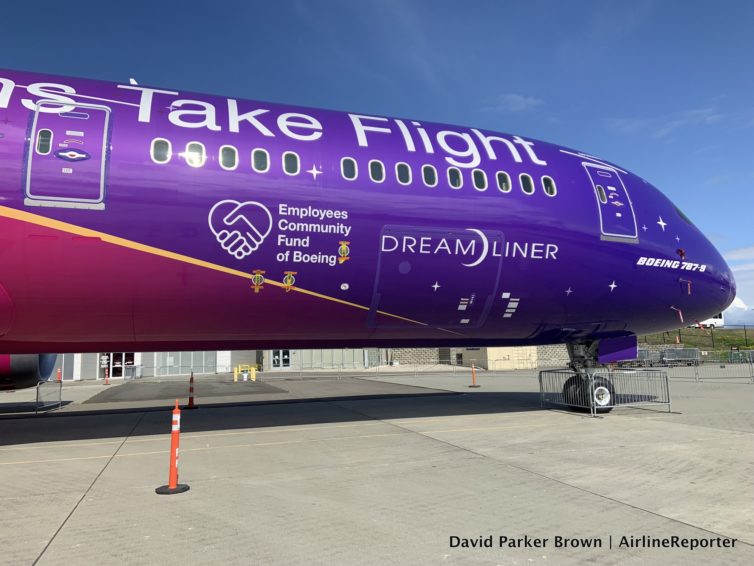
-
The ECF design is mostly a big decal.
-
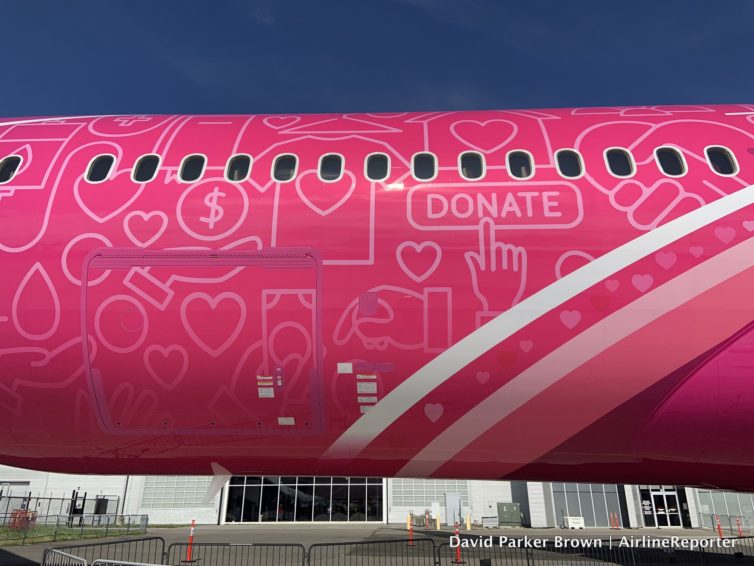
-
The fun graphics near the rear of the 787.
I would say that is a pretty worthy cause to support this unique livery. This is also special, since it is not actually all paint, but is comprised of the largest decal ever on a composite aircraft. Boeing has certified the decal technology, so now airline customers can start using them. I am hoping it means more special liveries and please, oh please, I hope it means less European white designs.
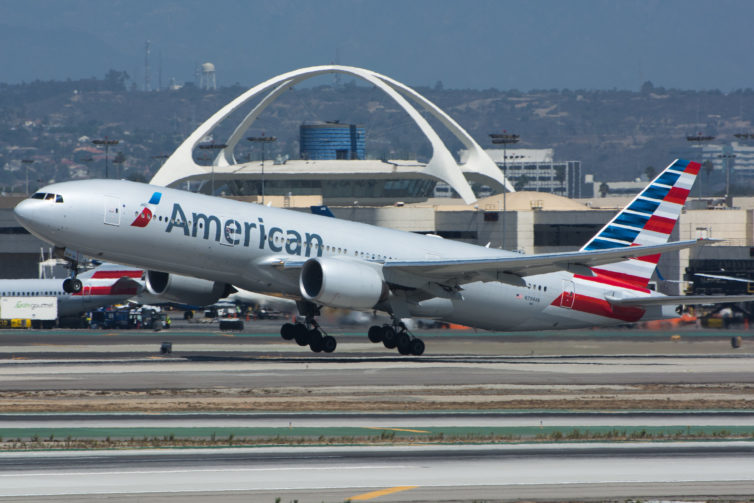
American 777-200ER departing from LAX with the iconic Theme Building and control tower, as seen from the Imperial Hill viewpoint – Photo: Jason Rabinowitz
Airlines are AWESOME! They enable travel at a rate faster and cheaper than at any point in human history, and at an uncompromising level of safety. They enable business and connect us with the world in ways which, just a few generations ago, would have been considered impossible. For some of us, airlines sustain our relationships. AirlineReporter exists because of our collective passion for airlines, travel, and aviation. But being a fan of any particular industry comes with some risk.
Sometimes good companies and organizations do bad things. And when that occurs, it’s important to first understand what’s happened, and then take action. In a civilized society, we do our best to look past minor disagreements and remain focused on the big picture. But what about egregiously misleading marketing? How does someone who loves the airline industry declare mutiny on one of their trade groups? For months we’ve pondered this question and have struggled in an identity crisis as a result. So we will do what we do best… we’ll cover this conundrum from a unique perspective.
 #StopAirTaxNow! Have you seen these ads around social media? In today’s crazy political environment, it’s just another call-to-action marketing campaign. You know the routine: Trigger folks at the mention of taxes, urge them to phone their elected officials, pick up their pitchforks, and maybe start a revolution. Overreaction? Possibly. But these things are a slippery slope. What sets this campaign apart is that it is funded by airlines we all know and rely on (and sometimes love).
#StopAirTaxNow! Have you seen these ads around social media? In today’s crazy political environment, it’s just another call-to-action marketing campaign. You know the routine: Trigger folks at the mention of taxes, urge them to phone their elected officials, pick up their pitchforks, and maybe start a revolution. Overreaction? Possibly. But these things are a slippery slope. What sets this campaign apart is that it is funded by airlines we all know and rely on (and sometimes love).
Let’s dig in…
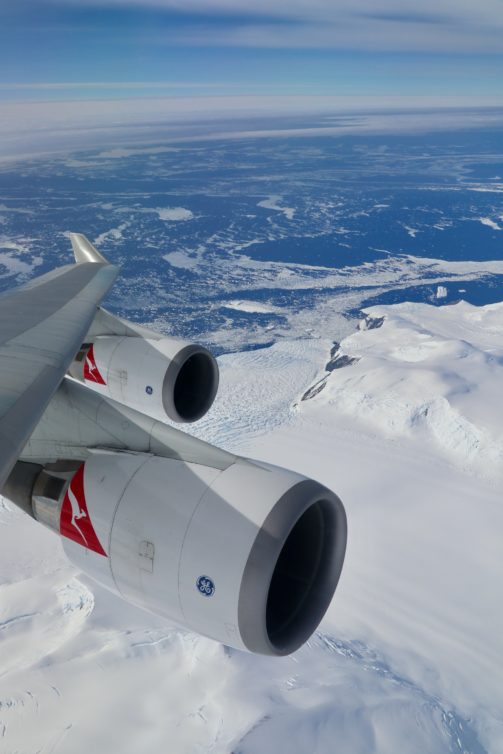
What a view! – Photo: Owen Zupp
This is a guest post written by Owen Zupp, who has previously written a few great stories on AirlineReporter. Today, he is sharing some parts of his new book, Boeing 747. Queen of the Skies: Reflections from the Flight Deck (we get no kick-back from the book, just want to share some cool AvGeekness — yes, that is now a thing). Zupp’s background ranges from charter work and flight instruction to ferry flights, flight testing, and the airlines. He has also served as both a Chief Pilot and Chief Flying Instructor. With 20 years in airline operations, Owen has flown both domestically and across the globe from his Australian base. He holds a Masters Degree in Aviation Management and his writings on aviation have been published around the world and received various accolades and awards. He is also just a cool guy! -Editor
To many, the Boeing 747 is more than merely a means of air travel. Affectionately called the ’œQueen of the Skies’, its arrival transformed the globe and over more than half a century it has carved its own niche in the history of aviation.
Its significance was recently impressed upon me by the number of queries I have received, both in person and via my website, that relate to the Boeing 747. Even though my career has seen me operate a hundred different types – the ’œQueen’ continues to consume the lion’s share of interest.
I have been fortunate in that as an airline pilot and aviation writer, I have been privy to some very interesting 747 operations. From flying over the Antarctica to ferrying a fifth engine beneath the wing, I have been able to research and share a range of experiences.
As a consequence, I thought it was time to put these stories together in one place and the title, ’œBoeing 747 – Queen of the Skies. Reflections from the Flight Deck’ was born.
What follows is an excerpt from the title. It relates to the chapter, ’œMagnificent Desolation’, which saw a Boeing 747-400ER venture southward to the frozen continent of Antarctica.
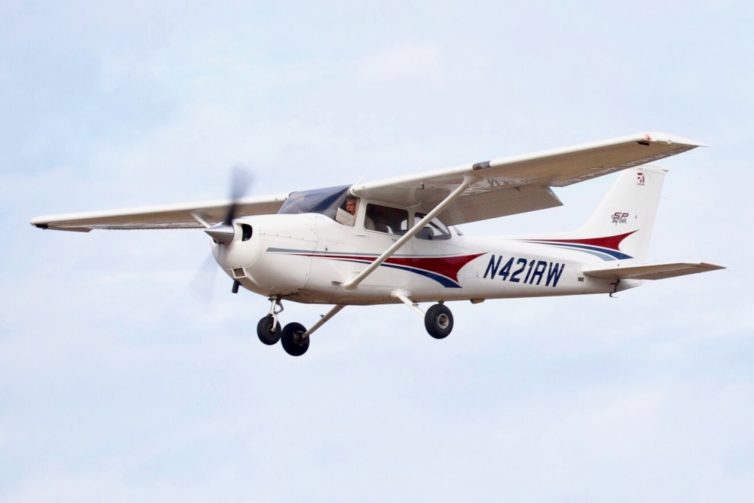
That’s me. In a plane. All by myself. – Photo: Chuyi Chuang
This is a continuation of my multi-part series on learning to fly. You can read the whole Fly With Francis series here.
I did it! I flew an airplane totally by myself over the Labor Day weekend. It was, in absolutely equal parts, terrifying and exhilarating.
Doing this was the culmination of a lifelong dream. Unlike a lot of airplane nerds, I don’t have any close family with ties to aviation. Instead, all of this started for me as a boy – my grandmother would take my brother and me to our little local general aviation (GA) airport in western Massachusetts, where we’d lie on the hood of her ’69 Beetle and watch skydivers while eating ice cream. My interest in planes waxed and waned over the years, but never really went away. There was a time when *gasp* I was afraid of flying – my first-ever flight experience was a very turbulent series of flights down the Atlantic Coast in the height of summer that put me off flying for a long time.
Fast forward to about a decade ago, when my wife got us a helicopter tour of Seattle for my birthday. The desire to fly returned with a vengeance. And the fear had long faded.
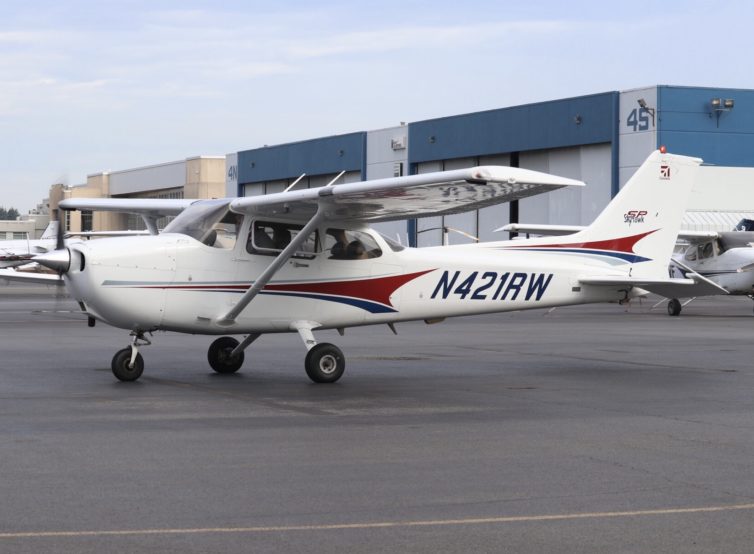
That’s me, working through preflight checklists on the Galvin ramp – Photo: Chuyi Chuang
Anyway, at a flight school like Galvin, periodic stage checks ensure students are properly prepared to advance to the next segment of training by having them work with different instructors, who both confirm the students’ competency and verify that the primary instructor has done their work properly. Some find the process cumbersome; for me the rigor is comforting.









